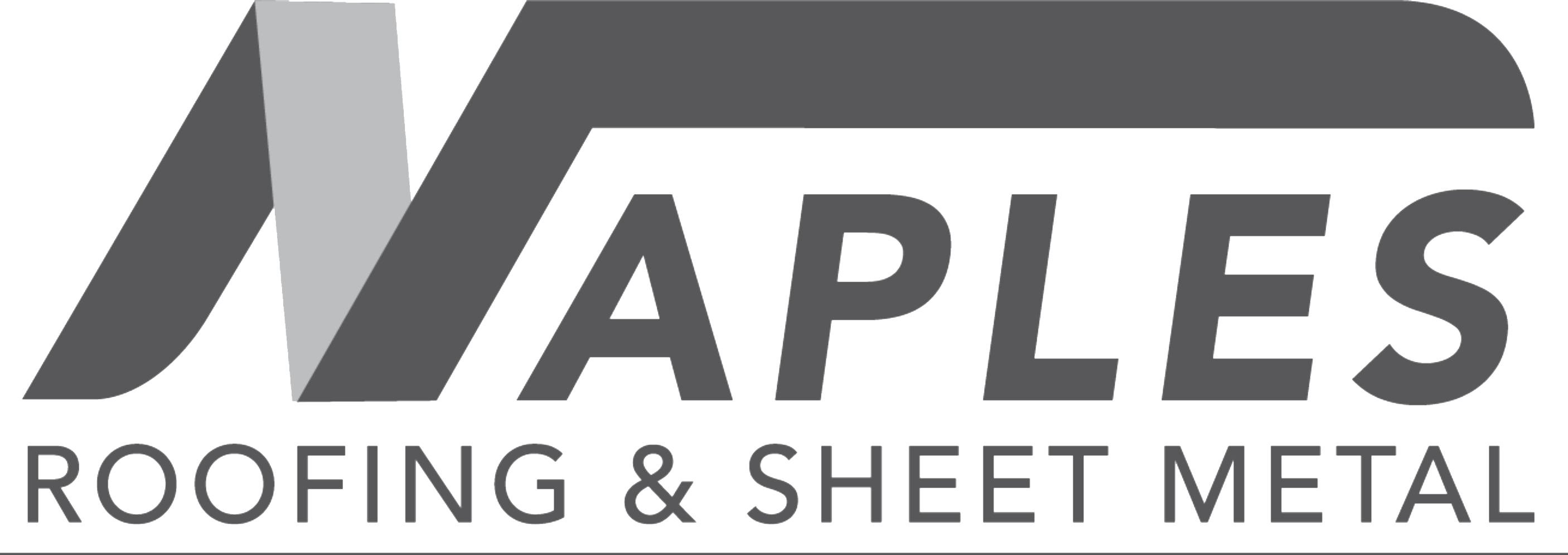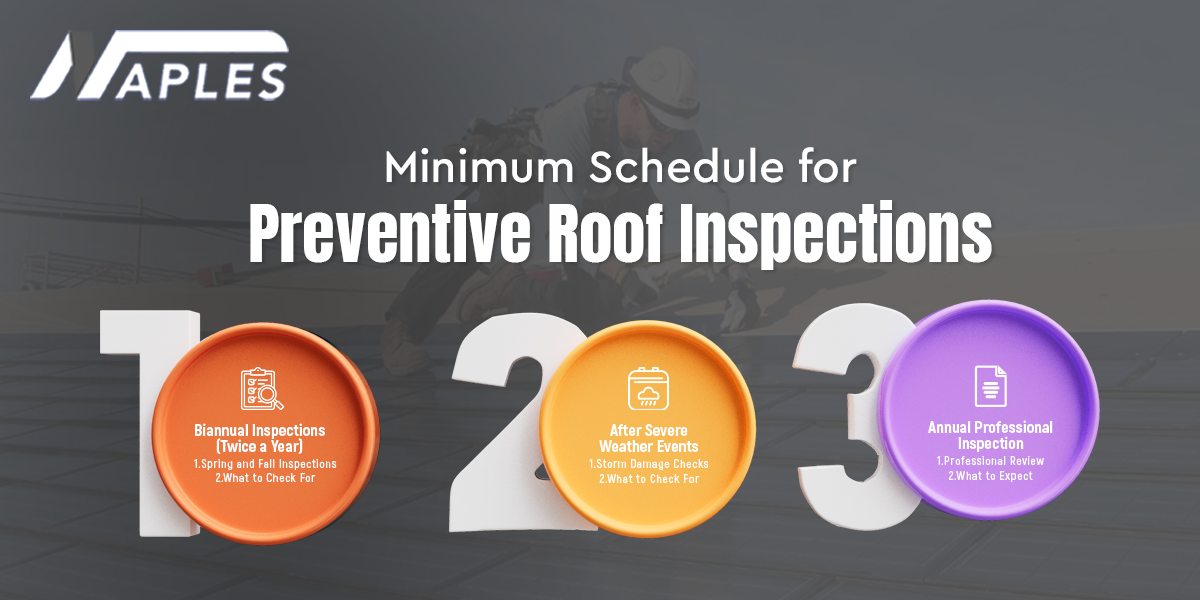What is the Minimum Schedule for Preventive Roof Inspections?
Roof prevention is key to extending the life of a roof, reducing costly maintenance, and ensuring a safer building. An important part of this maintenance is a routine roof inspection, which roofing contractors in USA can perform to ensure optimal results. But how often should they be dealt with? Here’s a breakdown of the minimum schedule for preventative roof inspections and factors that can affect how often they are performed.
Here are the major key points:
Why Regular Roof Inspections Are Important
Regular roof inspections help identify potential problems, such as leaks, broken shingles, and damaged flashing before they become major issues. By catching these problems early, you can avoid costly repairs and protect your home or building from weather-related damage, mold growth, and structural issues.
Minimum Schedule for Preventive Roof Inspections
While every roof has unique needs based on materials, location, and environmental conditions, the following schedule is recommended as a general minimum:
- Biannual Inspections (Twice a Year)
- Spring and Fall Inspections: The minimum recommended frequency for preventive roof inspections is twice a year, preferably in the spring and fall. This allows property owners to identify and repair any damage caused by winter’s extreme weather, as well as prepare for the summer heat.
- What to Check For: Look for signs of damage such as loose or missing shingles, clogged gutters, cracks, and mold or mildew growth.
- After Severe Weather Events
- Storm Damage Checks: Roofs should also be inspected after severe weather events, including hail storms, heavy rains, and high winds. These events can cause sudden damage, even if a previous inspection showed no issues.
- What to Check For: Focus on inspecting for punctures, missing shingles, leaks, and damaged flashing.
- Annual Professional Inspection
- Professional Review: In addition to your biannual checks, scheduling an annual professional inspection ensures a thorough review of your roof’s condition. Professionals have the experience and tools needed to identify hidden problems that could worsen over time.
- What to Expect: Professional inspectors may use drones, thermal imaging, and moisture detection tools to find subtle signs of water intrusion or structural issues.
Factors Affecting Inspection Frequency
While a twice-yearly inspection schedule is generally effective, several factors may require more frequent checks, especially for industrial roofing in USA.
- Roof Material: Certain materials, such as asphalt shingles, may require more frequent inspections due to faster wear, while metal or tile roofs can last longer between inspections.
- Age of the Roof: Older roofs tend to develop issues more frequently than newer ones, so consider increasing the inspection frequency as your roof ages.
- Local Climate: Areas with heavy rainfall, extreme temperatures, or frequent storms may require quarterly or seasonal inspections.
- Roof Slope and Design: Flat or low-slope roofs are more prone to water pooling and require additional inspections to ensure water drains properly.
DIY vs. Professional Roof Inspections
While homeowners can conduct basic roof inspections to check for obvious damage, professional preventive roof inspections offer a comprehensive assessment, especially for hard-to-spot issues. By combining DIY checks with professional reviews, property owners can stay proactive in maintaining their roof’s integrity.
Conclusion:
The minimum recommended schedule for preventive roof inspections as part of preventive roof maintenance is twice a year, ideally in spring and fall, with extra inspections after excessive weather events. An annual expert inspection is also essential for catching any hidden troubles. Adjusting this schedule based on elements like roof material, age, and nearby climate will ensure that your roof remains in optimal condition for as long as possible. Regular preventive inspections can save you thousands in future maintenance and extend the life of your roof.
Trust Naples Roofing for durable, high-quality roofing solutions that stand the test of time—where expert craftsmanship meets unmatched reliability. For more information you can visit on our website.
FAQ: Preventive Roof Inspections
1. Why are regular roof inspections important?
Regular roof inspections are essential for spotting issues like leaks, broken shingles, and damaged flashing before they become severe. Early detection helps you avoid expensive repairs and protects your building from weather-related damage, mold growth, and structural issues.
2. How often should I inspect my roof?
Roof inspections should be done at least twice a year, in the spring and the fall. This timing helps address damage after winter’s harsh conditions and prepares the roof for summer. However, inspections should also be conducted after any severe weather events, such as hail storms or strong winds.
3. What should I look for during a preventive roof inspection?
During a roof inspection, look for loose or missing shingles, clogged gutters, cracks, mold or mildew growth, and any signs of water pooling on flat areas. These signs can indicate the need for repairs to maintain your roof’s integrity.
4. Do I need a professional roof inspection?
Yes, an annual professional inspection is recommended. Professional roof inspectors near you have specialized tools, like drones, thermal imaging, and moisture detection equipment, that help identify hidden issues. Their expertise ensures a thorough review that can catch potential problems before they escalate.
5. Should I inspect my roof after a storm?
Yes, inspecting your roof after severe weather events is crucial. Hail, heavy rain, and high winds can cause sudden damage, even if your roof was previously inspected. Check for leaks, broken flashing, missing shingles, and punctures following storms.
6. Are there factors that could make my roof need more frequent inspections?
Several factors may require additional inspections, including:
- Roof Material: Some materials, like asphalt shingles, wear out faster than others, such as metal or tile, and may require more frequent checks.
- Age of the Roof: Older roofs develop issues more quickly and benefit from increased inspection frequency.
- Local Climate: Areas with extreme temperatures or frequent storms may require quarterly or seasonal inspections.
- Roof Design: Flat or low-slope roofs are more prone to water pooling and may need extra attention to ensure proper drainage.
7. Can I perform roof inspections myself?
While you can conduct basic inspections, a professional review is recommended annually. DIY checks are valuable for spotting visible issues, but a professional has the tools and expertise to detect hidden problems that might be missed in a DIY inspection. Searching for “Roof inspection near me” will easier to get a professional service.
8. How can regular inspections extend my roof’s lifespan?
Preventive inspections help catch small issues before they become large, costly repairs. Addressing damage early reduces wear on your roof, prolongs its lifespan, and saves you money over time by minimizing the need for major repairs or premature replacement.
9. When is the best time to schedule a professional roof inspection near me?
The ideal times for professional roof inspections are in the spring and fall. These seasons allow professionals to assess any winter damage and prepare your roof for the summer heat. If possible, schedule inspections before the rainy season to ensure your roof is ready for increased moisture.
10. What are the benefits of following a consistent schedule of roof inspection near me?
A regular inspection schedule helps maintain the roof’s integrity, prevents costly repairs, and improves your home or building’s safety. By adjusting inspection frequency based on factors like material, age, and climate, you’ll ensure your roof remains in optimal condition year-round.



